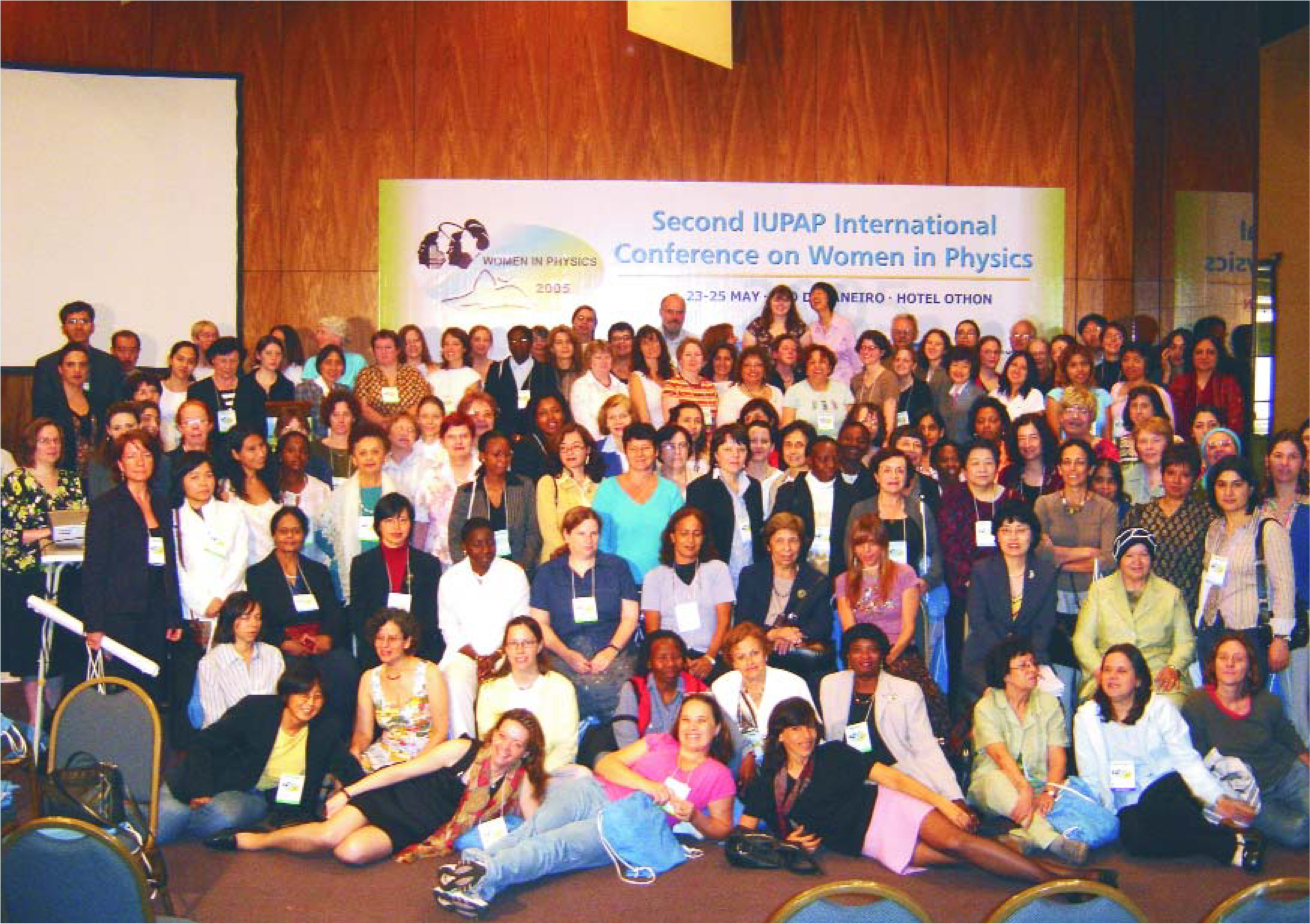Women Unite to Improve Physics Culture
DOI: 10.1063/1.2062911
Taking stock after the Second International Conference on Women in Physics, held this past May in Rio de Janeiro, participants say that—as with the first such meeting, which took place about three years earlier in Paris—they came away energized.
Among the changes stemming at least in part from the Paris meeting (see Physics Today, May 2002, page 24
Meeting attendees unanimously passed a resolution intended to promote the recruitment, retention, and advancement of women of all races and nationalities in physics. The resolution will be considered for endorsement this fall by the International Union of Pure and Applied Physics (IUPAP), which sponsored the conference.
Still in draft form, the resolution’s six recommendations call for IUPAP to require its liaison committees in the various member countries to catalyze women’s participation in physics; encourage physical societies to share resources with isolated physicists—those, for example, living in developing countries, belonging to minority groups, or taking time off to raise children; require organizers of IUPAP-sponsored conferences to include more women; increase the presence of women among the organization’s leadership and practice institutional transparency; cosponsor development of training modules on such topics as gender and race equity in physics; and oversee an international survey in 2007 on the status of women in physics.
For women from the US, the meeting served as a “reality check to understand the barriers that women in physics in developing countries face,” says US delegation cochair Kim Budil, a Lawrence Livermore National Laboratory physicist currently at the National Nuclear Security Administration. “It’s a cultural embarrassment that in a wealthy and developed country, we still are talking about paid maternity leave. It would be nice if we could get past the infra-structure problems and work on the more thorny problems of climate and discrimination.”
“Many female scientists have difficulties seeing the problem, although it may become clearer when they get to higher positions and [have to] dispute the power with men,” adds conference cochair Elisa Saitovitch, an experimental condensed matter physicist at the Brazilian Center for Research in Physics in Rio de Janeiro. Attaining equity and improving the culture for women in physics, she adds, “should be a joint effort [involving women and men]. I think deep down men have guilty feelings about the situation and some are doing something about it.”
Richard Hazeltine, a plasma physicist at the University of Texas at Austin, describes the meeting as “extraordinarily moving and an eye-opener.” Women from different cultures, with different histories, were saying the same things, he says. “Everyone looks the other way. We shouldn’t do that.”
In other news relating to women in physics, the American Institute of Physics reports that its reexamination of the “leaky pipeline”—the term used to describe women leaving academic physics in greater proportions than men (see Physics Today, April 2005, page 28

Participants at the Second International Conference on Women in Physics say their conversations were deeper this time around, now that they’re getting to know each other.
ARNALDO RIZZI

More about the Authors
Toni Feder. tfeder@aip.org
